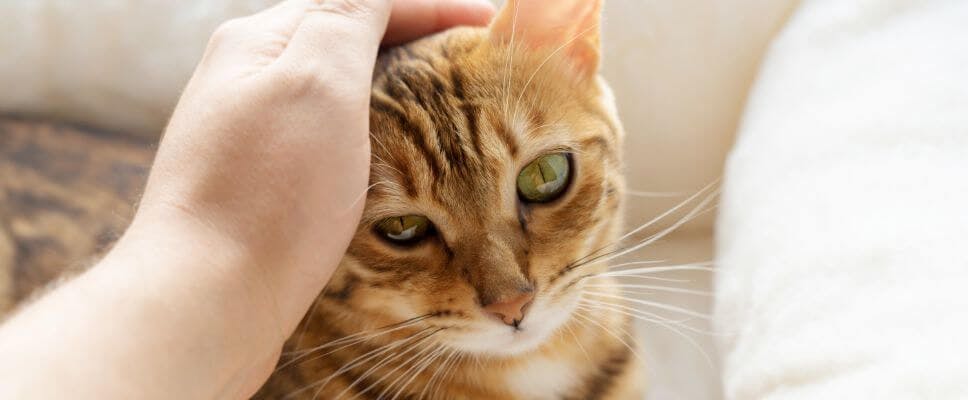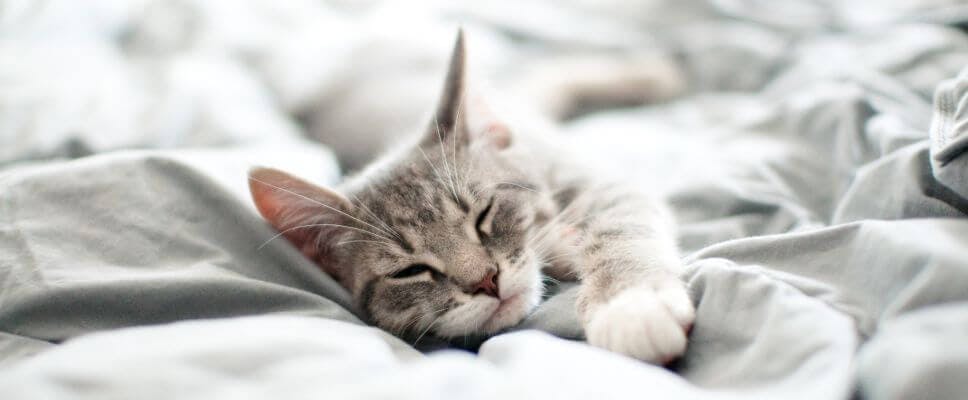
Cat Desexing For Females & Males: Age, Care And Cost
Desexing your new cat or kitten is more important than you might think. Beyond ensuring unwanted litters (often resulting in overpopulation), there are many more reasons why desexing your cat is the right move as a responsible pet owner. Here’s everything from the why to the how, and the aftercare.
For all advice and tips in this article, we spoke to PETstock VET, Dr Kathy Macmillan.
What Is Desexing A Cat?
Looking after a pet substantial responsibility, which includes ensuring they have all the medical care they need. While not mandatory, desexing your cat is beneficial to your cat’s health and the ever-growing population of homeless felines. There are far too many cats who need homes due to over-population in the community.
Benefits of desexing a cat:
- Reduce unwanted litters for female cats
- Can reduce the risk of mammary tumours and infections in the uterus for females
- Reduces aggression in male cats
- Reduces the likelihood of testicular cancer in male cats
What exactly is desexing a cat? A qualified vet performs a procedure to remove reproductive organs so a cat or kitten cannot reproduce. The procedure is different for males and females due to the unique anatomy. For females, it's referred to as spaying, and for male cats, castration.
How Old Or What Age Should You Desex A Cat Or Kitten?

It’s never too late to desex your cat or kitten; however, traditionally, the procedure is recommended when cats reach about five to six months old – for both males and females.
For females, it’s best to have your cat desexed before they go on heat to reduce the risks of some diseases later in life, such as mammary cancers. When a male cat reaches sexual maturity at around seven to nine months old and hasn’t been desexed, they begin to develop a strong odour, start spraying urine to show their sexual readiness and are more prone to fight other cats. If your male cat does end up in fights with other cats, they are vulnerable to contracting FIV (Feline Immunodeficiency Virus).
Also, at the age of about five to six months old, cats are grown to a size that will allow them to tolerate an anaesthetic better.
“Depending on the time of year, some female cats may come into season when they are younger, so they are more at risk of getting pregnant. Ideally, young kittens should not be allowed outside unsupervised for their safety. However, if this is unavoidable, it is safest to desex them younger, before they reach four months old. Ideally, they should weigh one kilogram or over,” says Dr Kathy Macmillan.
The Cat Heat Cycle
Cats are long-day breeders. A typical cat will start cycling in spring and stop again in autumn - therefore, 'kitten season' occurs over summer. Kittens born at the end of the season (late autumn/early winter) will likely start cycling in the spring and potentially can come into season as early as four months of age. Kittens born early in the season (late spring, early summer) are more likely to be nine to ten months old before they first come into heat in the following spring.
However, not every cat reads the rule book! Some cats, particularly purebreds kept inside and are under artificial lights over winter, may cycle over the cooler months.
Desexing A Male vs Female Cat
As you might guess, the desexing procedure for a male cat and a female cat is not the same. And due to this, the recovery time is also slightly different.
For female cats, it’s referred to primarily as spaying, where the uterus and ovaries are removed. While it is a routine procedure undertaken by vets every day, it’s still a significant and invasive surgery – so you should take aftercare seriously for a smooth recovery.
For male cats, desexing is often called castration and involves a shorter and less invasive operation, removing the testicles. In most cases, this is a same-day procedure.
Cat Desexing Aftercare: Vet Advice And Products

It’s important to remember that desexing a cat involves surgery, requiring care and attention for some time after the procedure.
Female cats will have sutures after being spayed (they may be visible or buried) and must be kept quiet for seven to ten days following the desexing. Attempt to confine them inside or in a limited space and discourage vigorous play over this period. Active cats are more likely to develop swelling at the surgery site too.
TIP: Some cats may need to wear an Elizabethan collar, or as some like to call it, ‘cone of shame’, to prevent them from chewing the sutures or causing damage by licking their wound.
Male cats usually don’t have sutures following a regular desexing procedure, so they can return to normal activity levels 48 hours later.
Be aware that if your cat is a cryptorchid (has at least one undescended testicle), they will undergo more extensive surgery, have sutures, and need to be managed in a similar way to a female cat after desexing.
If you do notice any issues after your cat’s desexing procedure, always reach out to your vet to ask questions or for a follow up.
How Much Does It Cost To Desex A Cat And What’s Involved?
Desexing your male or female cat does vary between clinics, and it’s best to contact your local vet for an accurate quote or price.
Several factors determine the cost, such as whether a pre-anaesthetic blood test, IV fluids, and post-operative pain relief are included in the overall fee. Furthermore, some clinics may charge slightly more for older animals, and there is usually an additional fee for a female cat on heat or pregnant.
Male vs Female Desexing Costs
As mentioned, the desexing procedure is entirely different for both females and males, understandably varying the price.
- A female cat desexing procedure is more complex, takes longer and requires more equipment, making it more costly than a male procedure.
- Male cats with undescended testicles (cryptorchids) will also be charged higher than a standard castration.
TIP: Low-income earners may be eligible for a subsidised cost on a desexing procedure through local council vouchers. Reach out to your local council to check if this is offered and if you’re eligible.
FAQ On Desexing Cats And Kittens

Does Desexing A Cat Change Their Personality?
Desexing a cat will not change their personality. A friendly cat will still be friendly; a shy cat will still be shy, and a playful cat will still be playful.
However, what desexing does is reduce or eliminate sexual behaviours, which is generally considered a good thing by most people who own cats as pets.
Behaviours changes seen following neutering include less aggression towards other cats, less motivation to roam, less urine spraying (and less smell associated with a male cat’s urine), and it will prevent the behaviours seen when female cats come into heat.
Do Desexed Cats Still Spray?
Cats spray urine to communicate their sexual status, and desexing significantly reduces this behaviour.
Unfortunately, spraying can also be stress-related, and this form is not affected by desexing. Anxiety-associated urine spraying is seen in both male and female cats, and the likelihood that it occurs will increase with the number of cats kept together in a household.
Do Desexed Cats Still Go On Heat?
The most common method of desexing female cats is to remove both the ovaries and uterus, called an ovariohysterectomy. Cats that have undergone this procedure will not cycle or come on heat.
If your desexed cat starts to show behaviours that indicate that she is on heat (crying, rolling, rubbing or adopting a lordosis position), it is worth a trip to the vet to have things checked out. Some of the signs of heat can be linked to other health issues.
Preparing For A Vet Visit
If it’s time for your cat to take a trip to the vet for a desexing procedure, make sure you’ve prepared in the right way – and well before the day itself, if possible.
Before taking your cat for their desexing procedure, it’s a good idea to ensure your cat is accustomed to the cat carrier to reduce their stress on the day. You can do this by feeding your cat inside the carrier or by training them to jump in for a treat – it’s incredible how life-changing this small action can be!
Now you’ve got all the tips and information your need for desexing your cat, make sure you think about booking into a vet or speaking to one before or after you’ve adopted your new best friend.
Cat Articles & Advice
Keen to know more about cat health and care? Keep reading the Pet Smarts blog for everything cats and kittens.